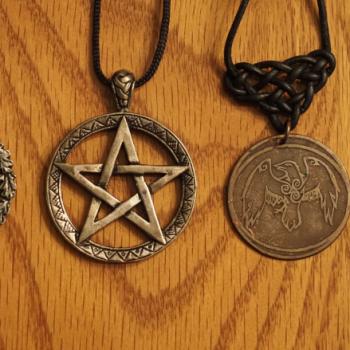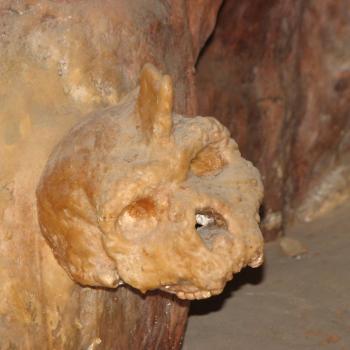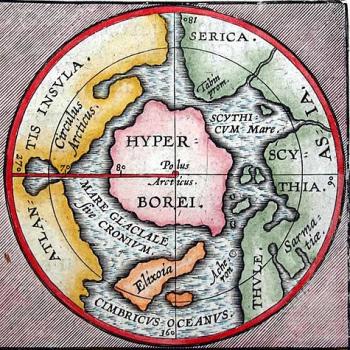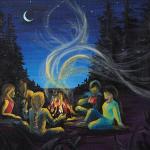During the soul’s transitional journey between lifetimes, the circumstantial evidence suggests that spirit travels in various forms of water, such as vapor, mist, clouds, rain, rivers, ponds and snow.
But water is the ambassador of all the elements, easily mixing with just about anything, so it turns out the soul can exist in the sap of trees and the water trapped in stones. Yet souls are also said to travel in moonlight, starlight and rock crystals.
Perhaps what spirits require to make the journey is some measure of warmth, even just a little (by the standards of the living). It’s a truism among ghost-hunters that spirits suck the warmth out of a room in order to manifest.
Generally speaking the soul spends most of its time in the blood of a warm body, which it puts to work finding external sources of warmth to guarantee survival. But the journey of the afterlife is another thing entirely and there are no guarantees. The following exploration identifies the many vessels used by the soul across religions and mythology to survive the transition from one body to another. Or not.
Soul in the tree
An Irish legend tells of a wicked specter that tricked a young couple into believing the other had died in some far-off place. Consumed by the grief of young love, they each committed suicide and were later buried side by side. Over the years, a yew tree grew from the man’s grave and from the woman’s grave came an apple tree.
Soon it become plain to visitors that the likeness of the woman could be seen in the apple tree and the man’s face in the yew. Believing the trees were magical, the local druids cut them down to make wooden tablets, upon which they wrote vision-tales of young love to perform at the Feast of Samain.
After hearing the poems the Irish king was in awe and asked for the magic tablets. As he held them in wonder they sprang together and were joined fast; impossible to part. After the supernatural incident the joined tablets were kept safe in the treasury of Tara.
An alternate version of the tale doesn’t include the druids but simply describes the two trees growing together, entangled as one and never to be parted.
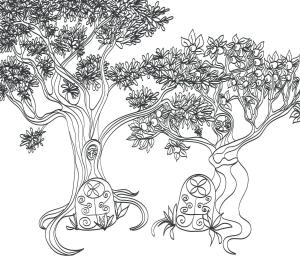
Across cultures the world tree was imbued with healing qualities and served as a conduit for souls, its roots reaching into deep springs below ground and its high branches mingling with the Milky Way. Singing birds in a world tree are souls waiting to be reborn.
For countless millennia the Milky Way has been the road of souls across cultures, and world trees reflected its starry brightness. In ancient Egypt the white sap of the sycamore fig was key to its sacredness – likewise for the sacred fig, an evergreen native to India. In Celtic culture the white paste of hazel nuts reflected the stars of the Milky Way and the milk of the coconut palm was used to bathe the statues of Hindu gods.
In response to the common ancient practice of coppicing (cutting trees to the stump), most world trees (hazel, oak, sycamore fig etc.) regenerate themselves in a different form. Rather than growing back normal branches, they produce long and flexible rods. This natural response to injury was once perceived as a miracle of regenerative and transformative healing, symbolic of the soul’s journey through the afterlife. The Greek messenger god Hermes carried a hazel rod topped by a pair of wings while conducting the souls of the dead on their way.
Soul in the stone
Massive stones of every size and type have been hauled for miles, arranged in rings, carved, etched and painted so ancestral souls might be attracted to take up residence during important annual festivals. This ring of ancestral souls overseeing pagan rituals long predated the ring of saints found in stained glass or statuary around the walls of European churches.
As markers in the landscape that align with the moon, sun and stars, the standing stones and their resident ancestral souls were immoveable guideposts to the universe, showing the way to immortality.
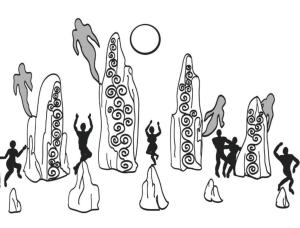
It wasn’t easy for the Vatican to keep people from believing that ancestral souls resided in the great stones of sacred sites. In the French village of Carnac, men had sex with their wives around the ancient standing stones under a full moon, presumably to attract a soul from the stones, or perhaps the moon, or possibly both. The only reason scholars are aware of this salacious activity is an order from a French king prohibiting the emission of semen at ancient sites.
At St. Renan in Celtic Brittany, women seeking to get pregnant slept for three nights on mysterious boulders known as mare stones. In Lyon, women once sat on heated stones known as pierrefrite.
Deep into pre-history, before the last age, people from Europe to Asia carried carved figurines of bone or stone and kept rock crystal in their homes, perhaps to attract guardian spirits. Many figurines were female Venus figures with exaggerated hips and breasts. Some were bird-men or bird-women.
Souls in smoke, clouds and the moon
Often the afterlife journey begins with cremation, lifting the soul in warm smoke to the clouds always floating over the horizon, beyond the edge of the world, drifting to the moon and the Milky Way.
A special soul like the Buddha may descend to earth on a cloud to be reincarnated. The Buddha’s mother, Queen Maya of Nepal, dreamed that a small white elephant descended on a cloud and circled her three times before entering her side.
In some Hindu texts the soul passes through the moon. “All who part from this world or this body go first to the moon … ” according to the Kaushitaki Upanisad 1.2. In the Vishnu Purana, souls float down the Milky Way “as braided locks in waves ‘til the orb of the moon grows bright from the misty crystal current.”
In this conception the moon is like a reservoir that fills up with souls and then releases them each month, waxing and waning to reflect the comings and goings. After the full moon, the souls descend to the summit of Mt. Meru in crystalline snow that melts in spring to recharge the great rivers of India.
In Celtic tradition, becoming pregnant is more likely five days after a full moon, apparently so new souls have a chance to descend to the clouds and fall in rain or snow.
Souls in the stars
The most common and widespread belief is that souls travel along the Milky Way. Cross-cultural texts describe the ultimate destination as the northern celestial pole and the circumpolar stars turning closely around it, never setting below the horizon.
The souls of pharaohs, kings, warriors and others who gave their lives for the community were expected to live eternally among the never-setting stars, always visible as a model of supreme virtue.
The Egyptian Pyramid Texts say, “ … may you lift me and raise me to the Winding Waterway, may you set me among the gods, the Imperishable stars … the White Palace of the great ones … ”
A Hindu text describes royal sages and heroic warriors taking their eternal rest in “those brilliant regions that are seen from the earth in the form of stars …”, according to the Indralokagamana Parva.
The enigmatic Celts weren’t so literal. The 6th century Welsh poet Taliesin wrote that only worthy souls could eat from the Dagda’s cauldron, located inside a castle that was always turning in the northern sky. The cauldron “will not boil the coward’s portion.”

Irish poet W.B. Yeats drew on similar imagery in “A Dialogue of Self and Soul.”
My Soul I summon to the winding ancient stair,/Set all your mind upon the steep ascent,/Upon the broken, crumbling battlement,/Upon the breathless starlit air,/Upon the star that marks the hidden pole;/Fix every wandering thought upon/That quarter where all thought is done.
A similar cosmic image was evoked by Senator Robert F. Kennedy during the Democratic Convention of 1964, when he publicly spoke about his slain brother for the first time.
“When I think of President Kennedy, I think of what Shakespeare said in Romeo and Juliet: ‘When he shall die, take him and cut him out into stars, and he shall make the face of heaven so fine that all the world will be in love with night, and pay no worship to the garish sun.’”

Traveling in crystals
In Irish legend Prince Connla was carried away by a fairy maiden in a crystal boat, never to be seen again. In the Irish heaven Tír na nÓg, birds sing unceasingly in trees of purple crystal. Taliesin wrote of three kinds of water flowing from a metaphysical cosmic fountain – one that filled the sea, a second that became rain and a third that appears “in the veins of the mountains, like a sparkling feast.”
When a star falls from the sky, the Menomini of the Great Lakes region say sometimes they find pieces on the ground in the form of rock crystal. A commonly shared belief from Australia and the Pacific Islands to North and South America was that guardian and helping spirits could travel in rock crystals.
After the ritualized death ceremony of an apprentice broke down cultural conditioning, the shaman would symbolically place a crystal on the student’s forehead, bestowing the vision to find lost souls. In Southeast Australia the supreme being Baiame sat on a crystal throne by the Milky Way to receive innocent souls.
In 3rd century Persia, the Manicheans believed souls traveled from the stars in columns of white light. In Roman folklore each star was a candle representing a soul on earth.
The warmth of music
Among the oldest ritual aspects of funeral ceremonies is singing, chanting or otherwise making music. It seems the soul can be contained in the warm poetry of song, uplifted and embraced among the notes. The more artful the song and the singers the faster the soul rises.
The collective psychic energy conjured at concerts or all-night raves isn’t far removed from all-night dances across ancient and indigenous cultures, driven by repetitive beats and verses. One of the shamanic purposes of community dances is to teach the release of the soul from the body, so the same release can ultimately be accomplished successfully at death.
Across ancient cultures harps and singing swans are associated with the Milky Way. The Irish chief Dagda brought his magical harp when he arrived from the spirit world to make his earthly home at the megalithic mound Brú na Bóinne in County Meath. His wife Boann was goddess of the Milky Way (The Way of the Illuminated Cow). It was Boann who circled a cosmic well three times and caused it to overflow and create the River Boyne.
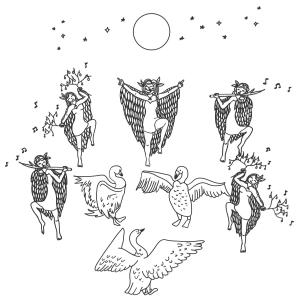
The musical whooper
It’s no accident that flocks of whooper swans spent the winter in the Boyne Valley long before the Dagda and Boann arrived. The whooper is celebrated in Irish legend as a highly musical bird, which is scientifically accurate, as they sing complex duets to each other as part of an avian greeting ritual. The Finnish Kalevela describes swans flying souls along the Milky Way to the celestial pole.
The Greeks identified the circumpolar northern constellation Lyra as a harp. In Greek paintings and mosaics, swans were shown singing along while men played the lyre. A medieval French bestiary praised the ability of swans to harmonize with the harp.
In ancient Egypt the musical Mother Hathor was goddess of many things, including music and the Milky Way. The sycamore tree of Hathor was depicted with breasts suckled by pharaohs to gain the strength needed for rebirth.
The Hindu river goddess Saraswati played a harp as she flew on a swan, holding a pot of water and crystals that symbolized travel along the Milky Way.
The whooper swan is known to fly at heights barely visible to the naked eye yet observers can hear the sound of their repetitive two-syllable call – whoop-ah – that keeps the flock together during their long journey.
(Ben H. Gagnon is an award-winning journalist and author of Church of Birds: An Eco-History of Myth and Religion, to be released March 31 from John Hunt Publishing, now available for pre-order. More information can be found at this website, which links to a YouTube video.)



